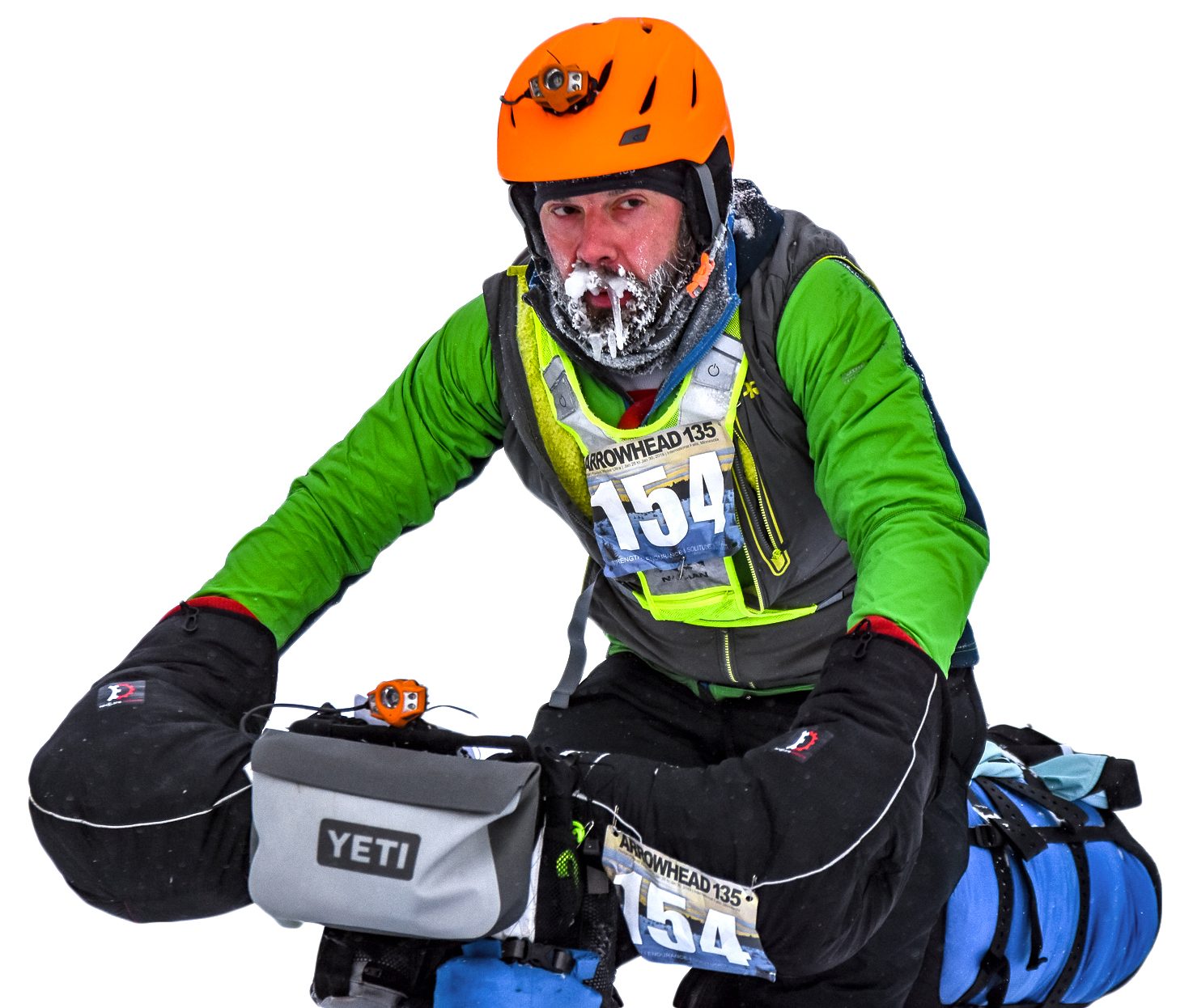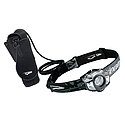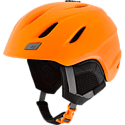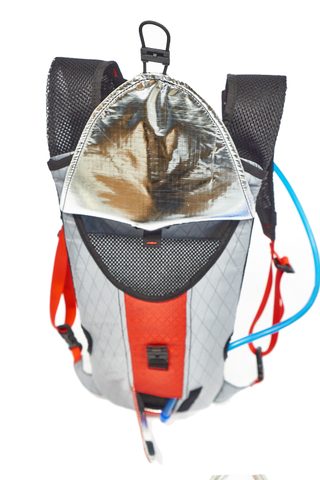
(Editor’s note: Christopher competed in this year’s Arrowhead 135 just last week. He was on the trail for about 20 hours in a row, and finished 12th out of 79 bike racers.)
High and low technology is essential to my racing—first and foremost, my fatbike, a Salsa Mukluk that I call the Blue Buffalo. The bike’s frame, wheels, and some other parts are made of carbon fiber, a light and strong material that also, crucially, doesn’t conduct cold as harshly as metal. In its essence, though, this wonderful, beautiful machine is a 19th-century technology that we are just tweaking.


To stay warm and dry in winter conditions, I wear various pieces of technical outdoor clothing. My boots use an insulation developed for NASA, for instance, and my pants and jacket are made from light, breathable but warm synthetic fabric. Underneath, I wear socks and thermal baselayers (think “long underwear” but pay more money for it) made from an amazing sustainable material called wool. On my helmet—funny-looking but warm confection of plastic and padded cloth—I wear a headlamp that turns the energy in lithium AA batteries into 500 lumens of lovely yellow light.

Though race rules require us to carry winter survival gear such as a sleeping bag rated to -20º F and a sleeping pad, I have never, thankfully, had to use that gear under any real duress. To fuel myself, I eat and drink everything from plain old trail mix and slices of cheese to syrupy carbohydrate gels and a hydration drink that tastes horrible under normal circumstances but like heaven on the trail. I keep the drink warm (or at least not frozen) in an insulated backpack and sip it through a hose that I route up my jacket sleeve.

When I’m not eating or drinking, I’m probably studying the bike computer mounted on my handlebars, a sophisticated device by Garmin that provides way too much data: actual and average speeds, distance, time spent moving and stopped, temperature, directional heading, even elevation above sea level and the total number of feet climbed. By the end of a race, I’m pretty sure the damn thing is malfunctioning because there is no way on earth that a mile could take that long to ride, and yet…

While my Garmin is invaluable to me, it can’t tell anyone else where I am. For that, I use a little SPOT tracking beacon that periodically pings GPS satellites, providing my almost-exact location. This would help race organizers recover my bike after the wolves finally get me, but the SPOT also allows “spectators” at home to virtually watch the race through a GIS service called Trackleaders. Software plots data from racers’ SPOT beacons onto a Google map of the course, creating a (very) slow-motion picture of the race: who’s out front, who’s riding fast or slow, who’s on the flat stretches and who’s in the hills, who’s stopped and who’s approaching the checkpoints or the finish line. “Watching the dots” is not as much fun as riding a bike through the frozen woods, but everyone has their thing!